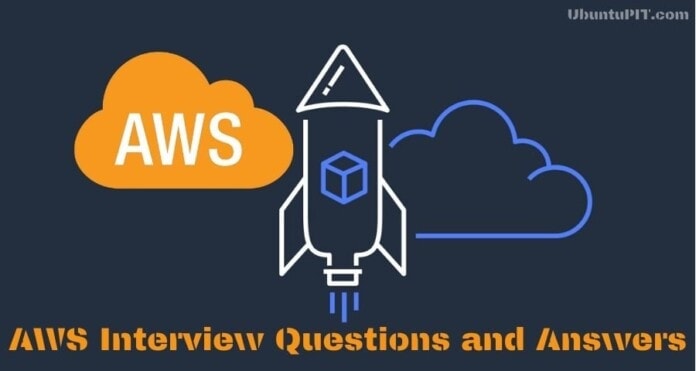Do you have an AWS interview in a few days? Then this article is for you. Amazon web service platform is serving the cloud industry with its multi-layered services. However, the unique need for AWS certified professionals and associates is still there. Developers, Engineers, and cloud platform enthusiasts are reaching out for the AWS certifications for career development. If you are one of them, you already know that you have to face the companies and recruiters. The meetings or the interviews would be great if you can get the idea of frequently asked AWS interview Questions and answers, which of course, include AWS solution architect interview questions, AWS lambda interview questions as well.
We understand the struggle for finding out the helpful and authentic AWS interview questions. Our editors have covered questions that are being asked in the discussions for several years and picked the best answers to them. If you are a lambda enthusiast, our AWS lambda interview questions might be helpful for you.
If you are a computer architect, our AWS solution architect interview questions might help. Of course, you need to have intense preparation regarding the ins and outs of the AWS. Yet, a little help from the experienced AWS certified individuals who have been facing the interviews can make a more significant difference. Let’s discuss the AWS cloud interview questions.
Essential AWS Interview Questions
Here is the fact, the preparation is all up to you, we don’t have anything to do with that. What we can do is a little help with your development. Let us help you with your career growth. Today we are going to provide you the list of frequently asked questions and answers in an AWS interview that will help you to face your next meeting and possibly to get the job. We will be focusing on AWS solution architect questions, AWS lambda interview questions, and AWS cloud interview questions besides the general questions.
Basic AWS Interview Questions
We are going to start with the very basic and commonly asked AWS interview questions. This list will be beneficial for both beginner and medium level individuals. There are certain parts that primarily you need to cover. We will be focusing on the primary and basic parts of the AWS platform, such as AWS cloud interview questions in this segment.
1. What are the basic services from AWS?
Amazon Web Service solely provides cloud-based services that are compatible with cloud platforms. There are:
- cloud computing service
- networking service
- cloud storage service
2. What do you understand by “AWS”?
AWS means Amazon Web Service. It is a cloud-based platform that provides several demanding services such as web services, networking services, web-applications, management systems, database services, and more to be followed.
3. Can you explain what EBS volume is?
The full form of EBS is elastic block stores. EBS volumes are the persistent volumes that can be used to attach to the EC2 instances. We use EBS volume for providing access to multiple users to the blocks, and data security for every single block. Even if the instances stop, your data will be secured and safely stored.
4. Are there any types of EBS volumes?
Yes, the EBS volumes come in four categories. These volumes are categorized based on what kind of storage is used on the volume. Basically, SSD and HDD are used in these volumes. SSD-based volumes are used for frequent usage, and HDD-based volumes are used for larger data storage.
- gp2 volume
- io2 volume
- st1 volume
- sc1 volume
5. Can you explain GP2 volume?
GP2 uses the SSD volume for better performance. The GP stands for general purpose. This comes in 1 Gibibyte to 16 Gibibyte storage. The test environment, dev environment, and overall system volume can be covered up by gp2. GP2 also provides several virtual desktops, bootable volumes, and 2,375 MB per second. For a wide range of workloads and a secured development environment, GP2 is highly recommended.
6. What is io1 volume? How gp2 and io2 are different than each other?
io2 EBS volume is set up for more extensive and sensitive data. io2 is known as the provisioned IOPS SSD, which is sufficient for the more massive databases, sustainable applications, and critical environmental operations.
gp2 is used for generalized environment type workload. When you need more significant databases and complex applications to execute, you need io2 volume.
7. What EBS volume would you suggest for a low budget configuration?
In both st1 volume and sc1 volume, there is HDD instead of SSD and can cover up a more considerable amount of data. Still, sc1 (also known as Cold HDD volume) is cheaper than any other ESB volumes. If you need to access continuously to your data, you can pick st1 volume. It is affordable and also capable of covering up orderly workloads. If you need to store a significant amount of data, sc1 could be your option.
8. Can you name a few frequently used products from AWS?
All the products from AWS are based on their basic services. If we are talking about cloud computing, there are EC2, Lambda, Elastic Beanstalk. If we consider the networking service, there are Route53, VPC, and if we consider the storage service, EBS, S3, and EFS are their frequently used products.
9. What do you understand by Auto-scaling?
This is an automated function that can automatically measure, scale-up, scale down, expand, or shrink your instances depending on the processing unit resources or the storage ability. Autoscaling is a feature of the Amazon EC2 instances. You might need several resources at the same time, and you need to manage the resource instances. They all will not be the same in size and performance. You can easily set up the instances according to your needs with the auto-scaling feature.
10. Why do we need subnets?
In AWS interview questions, subnetting is one significant topic. Subnetting means dividing a network into separate pieces. We need subnets for various reasons, such as flawless performance in-network, avoiding network over-loading, Enhanced security, or easier administration execution methods. For better performances, while having a large traffic incoming, you must divide the networks into subnets. Not only the subnets help to increase the performance, but also it helps to have multiple secured networks.
11. Can you tell me what EIP is?
EIP stands for elastic IP. Dynamic cloud computing requires a lot of transactions, and they have to be frequent. EIP plays an important role here. When the customers are interacting on the AWS platform, they will be using the virtual private cloud. When launched an EC2 instance, you will receive a public IP address. To avoid this problem, we use EIP, which will not change the instances even if you start or stop the instances.
12. What is Geo-targeting?

Every business has a targeted audience, and you need to reach them with customized content. To reach the customers, you need to figure out the possible customer base geographically. Geo-targeting is the method to show your customized content to the audience that have pre-defined requirements, without changing your URL.
13. What is Amazon CloudFront?
Amazon CloudFront is known as a content delivery system. This service works globally. This AWS service provides a secured content delivery system in both user and developer-friendly environment. You need to deliver content constantly to your audience, and that also has to be flawless. Amazon CloudFront provides this flawless content delivery system to you.
14. Can you tell me the steps for the CloudFormation solution?
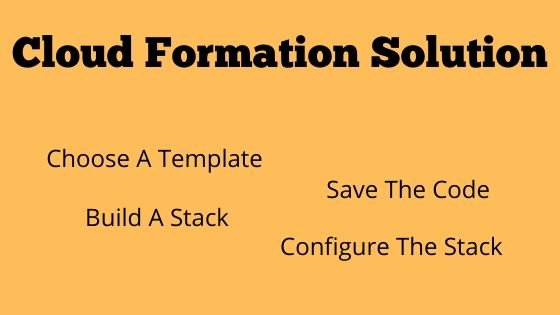
For starter, Get a template for CloudFormation. You can either create it or choose from the existing templates. Secondly, You need to save the code template in the s3 bucket, or you can save it locally. Finally, You need to build a stack depending on your code template using AWS CloudFormation and configure the stack.
15. Can you explain Cloudwatch?
Cloudwatch is a monitoring tool for the AWS platform. You can check all the components such as network, security, application through the Cloudwatch. There are two types of Cloudwatch available that are:
- Basic monitoring Cloudwatch.
- Detailed monitoring Cloudwatch.
in the previous list, here you have commonly asked AWS Interview Questions, which can help you to know the basics and face the interviews with confidence. For further development, please check the AWS solution architect interview questions and AWS lambda interview questions in the following sections.
Intermediate Level AWS Interview Questions
In this segment, we will be focusing on the cloud platform, service details, and solution architectural question answers. This list will be effective for the intermediate level of individuals who have the experience of working on an AWS platform before, willing to go for better opportunities.
16. How many of S3 buckets can you create?
The S3 bucket list depends on the size you are planning to use. The maximum amount of buckets you can use in S3 is 100. Each S3 bucket can store a maximum of 5 Gigabytes of data or objects. You can store from 0 bytes to 5 gigabytes in each bucket. In 100 of the S3 buckets, you can store up to 5 Terabytes of data or objects.
17. What do you understand by SQS?
Queuing is important for any kind of constant textual or verbal communication system. SQS provides the flawless queuing service for the frequently sent or received messages. The inbound and outbound messages also can be stored by SQS. There are standard and FIFO queuing available in SQS.
18. Can you name all the storage classes in S3?

- S3 standard
- S3 intelligent tiering
- S3 standard infrequently accessed
- S3 one zone
- S3 glacier
- S3 glacier deep archive
19. Can you explain Fargate?
Fargate is a convincingly effective way to operate and manage the containers. Fargate is a virtual engine that can monitor, set up, and round up the clusters. For all the packing of virtual machine cluster components, Fargate is one perfect solution as it provides an abstract server. You no longer need to shape anything up, and you can concentrate on the design directly.
20. How can you control the data access to S3 buckets?
There are four ways to control data access in S3 buckets. They are
- Identity and Access Management User Policy: IAM specifies the users to use certain buckets and objects in a programmatic way.
- Bucket Policy: Using the policy generator, the users can be given the authority to use specific buckets.
- S3 Block Public Access: This actually allows public access to the buckets but in a minimal volume. All the users can access the buckets in this way.
- Access Control List: ACL is used whenever the bucket policy exceeds 20 KB in size.
In AWS interview questions, you are going to face a lot of s3 bucket segments.
21. What is S3 one zone infrequent access?
S3 one zone infrequent access is used for infrequently accessed data. This is designed for secondary data backup or replicated data backup. You might need to store a large volume of data with the proper security module. This is also a budget-friendly option for users. You can directly store the data in the S3 one zone. This is also available for the commercial region as well.
22. What is direct connect?
AWS direct connect is used for the secured network connectivity among the AWS platform and the datacenter. It allows you to create a dedicated network connection. It works for any specified network and directs connect networks.
23. Suppose, you need to log in to the AWS account. What are the close alternatives for the console that you can use?
Yes, there are a few tools that can be used to login to the cloud environment, such as
- Eclipse: This is one of the Java IDE, which is used for development. There is an open-source AWS toolkit that can help you to log in from the eclipse directly. This is also an amazing option for AWS application development.
- AWS SDK: This is also an open-source java API with which you can easily get access to several AWS services. You can take advantage of login as well.
- AWS CLI: This is a unified tool from the AWS platform to control and manage several services of AWS beside the login.
- Putty: This is an open-source SSH and telnet client which has several amazing features like remote desktop, reconnection, dynamic port forward, protocol bridge. You can easily log in to your AWS account with putty.
24. What is AWS CloudTrail?
AWS CloudTrail is used for monitoring, auditing, maintain, and operate the components for the AWS accounts. This is also used for the logs, activity charts, troubleshooting security components, and tracking. CloudTrail is proper monitoring and operational service from AWS, which can save a lot of time. You can easily manage the internal audit, event history checking, and resource management.
25. What is the storage class? Does S3 come with any default storage class?
There is a property called storage class in every S3 storage. You can change the class after you log in and configure. You always have a default class in every storage. The default storage class in S3 is the standard frequently accessed. You can change the storage when you configure the environment for storage.
26. What do you understand by Role?
You can assign specific accessibilities to different individuals to use the AWS account. Accounts with different permission layers are called roles. Users can use the options according to their permissions. There are separate categories of roles for different users. An admin will have a different role than a general user.
27. Why is AWS Config useful?
AWS Config service is used for the primary and advanced configuration in the AWS environment. With different requirements, you need to configure the environment differently. With the AWS inventory, you can configure, check the configuration history, notifications, and the connections with the resources.
28. What is RDS?
Relational database service, also known as RDS, allows you to set up your database easily. This also allows you to set up automated backups, hardware provisions, and database relocation. This is one of the cost-effective automated database management services. You can also resize and relocate your database in no time.
29. Can you tell me about the logging capabilities of AWS security?
You can use separate login options from AWS. There are a few default configured login options from AWS that are available. Some of them are directed, and a few have the account-oriented login system. For AWS Config and AWS CloudTrail, they have the account-oriented login system for their specific services.
30. How does the website metrics monitoring work in AWS?
Another important topic for AWS interview questions here, and the answer would be; Yes, AWS has the CloudWatch service to monitor the applications and environmental statuses. You can monitor the API calls, sign-ins, auto-scaling events, State changes in EC2, and other scheduled events. You can use the CloudWatch for custom data as well. You can also get the result through AWS management console or statistic consumer.
31. What are the edge locations?
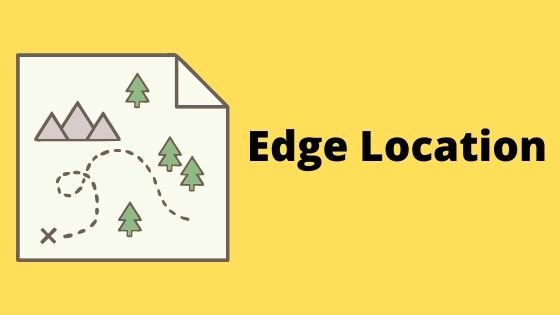
Edge locations are the pre-defined places where the specific content will be showcased. Users get to see the content from the edge location in the first place. However, if the content is not available, it can be copied from the original location and stored in the edge location.
32. Can you tell me about the policies?
Policies are the pre-defined rules or the permissions that you provide to the users. Users have a certain layer of permissions to use any service. There are two kinds of policies for AWS; they have managed policies and inline policies.
33. What do you understand by VPC?
Virtual private cloud, also known as VPC, is used for isolated and customized networks. For security purposes, you need to have a private cloud IP that can work as a proper IP address. VPC has the IP address, security services, IP ranges, subnets, and gateways.
34. Explain NAT gateways.
To securely connect with a private network without the other interruption, we use NAT gateways. A NAT gateway supports a maximum of 5 Gbps of bandwidth. Multiple subnets can be easily connected with NAT gateways. TCP, ICMP, and UDP are the supported protocols for this gateway.
35. Can you explain the storage gateways?
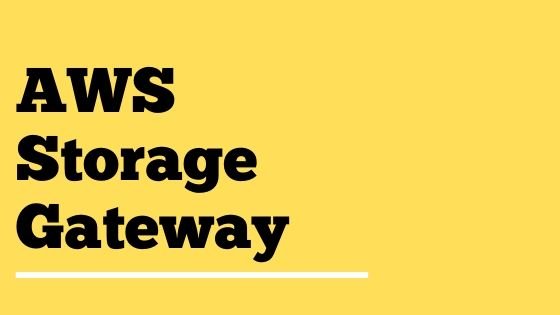
AWS storage gateway service allows you to have accessibility to the virtual cloud storage. This is a hybrid storage service that also allows you to manage your storage, move the data, archive data, process data, or recovery the data. There are three kinds of storage gateway in AWS, they are:
- File Gateway
- Tape Gateway
- Volume Gateway
36. Can you explain the S3 data encryption?
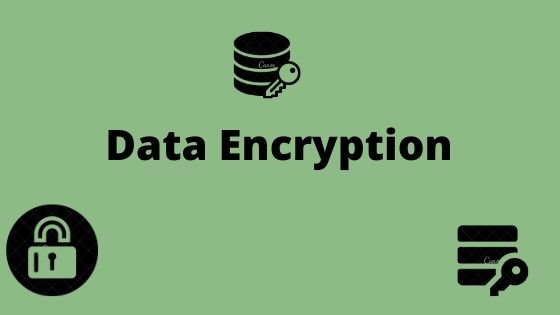
Data encryption means transforming your raw data into an encrypted form for security purposes. Whenever you are sending or receiving data, you need to use data encryption as you don’t want anyone to see the data except for the authorized individuals. In S3, elastic block store encryption is available to encrypt the whole block of data. Data encryption is available in three ways. They are:
- S3 AES 256 encryption
- Key management service
- Client-side encryption
Here you have AWS Interview Questions and answers for your intermediate level interview and skill comparison.
Expert Level AWS Interview Questions
Finally, in this part, we will be focusing on the experienced individuals who are already working on the AWS platform and trying to go for better opportunities. These AWS interview questions and answers would be perfectly applicable for experienced individuals with expertise. This list of AWS interview questions can also benefit the beginner and intermediate level individuals.
37. What do you understand by snowball?
Data transportation service is one of the major services from AWS. Snowball is highly effective for the larger amount of data transfer. Snowball takes less time and provides secured data transfer from one place to another. you can transport up to petabyte-scale of data with snowball service. Snowball also offers analytic, genomic, media type data for faster service. There are also backup and archive options for large amounts of data.
38. Explain the AWS virtualization categories.
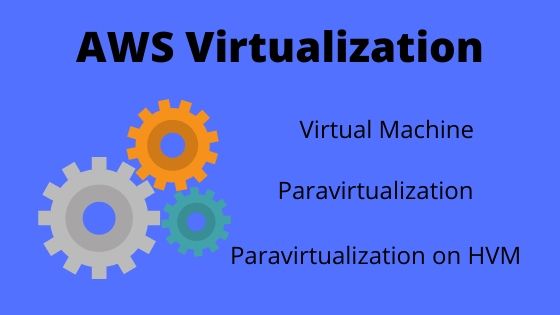
Three different types of virtualization are available. They are:
- Hardware virtual machine: HVM works as the fully equipped virtual hardware.
- Paravirtualization: Paravirtualization works as the boot loader for the PV AMIs.
- Paravirtualization on HVM: It enables the OS to make a secure connection between the storage and networks.
39. Can you name a few AMI designs?
There are several types of AMIs available to use. A few commonly used AMIs are:
- Hybrid AMI
- JeOs AMI
- Fully baked AMI
40. What do you understand by redshift?
AWS Redshift is a hugely accepted data warehouse service. You can use up to petabyte-scale data on this virtual data warehouse. You need to set up a bunch of nodes that are known as the AWS clusters. In the individual nodes, you can upload your data depending on your needs. Data analysis and operation are quite flexible in redshift cluster management.
41. Are there any backup types in the RDS database?
There must be at least one RDS related topic in the AWS interview questions list. Yes, there are five types of backups in the RDS database. They are:
- Automated Backup: It turns on automatically and backs up all of your data regularly. It backs up the data on scheduled time every day. It can take up to thirty minutes.
- Point in time: This backup service requires a new instance to restore the database. You can use the console or the command line to make a new instance. It can take up to five minutes to back up.
- Snapshots: This backup service requires user attempts. User needs to manually create a new instance and restore the database.
- Snapshot copies: You can copy a snapshot and manually change it.
- Sharing Snapshot: Though it is an unencrypted backup service, you can share the snapshots with other authorized users.
42. What is ELB?
Whenever there is massive traffic gets in, ELB automatically separates and distributes the traffic into separate containers and instances. There are a few categories that involve the application, network, and classic load balancers for user convenience. You can control the traffic, secure your network, and scale up your instances with ELB.
43. Can you convert a public subnet to a private subnet?
Yes, a public subnet can be converted into a private subnet. In order to convert a public subnet into a private subnet, you need to need to remove the IGW. You also need to add NAT gateway, which will be available in the private route table.
44. How can you provide access to any specific user to a bucket?
You need to follow these steps to give access to any specific bucket to any user:
- Check your instances and put them into the category
- Give the authorization to the user depending on the specific servers.
- Make sure the tags are locked-down.
- Assign the policies to the IAM users.
45. Can you name the deployment models for the cloud?
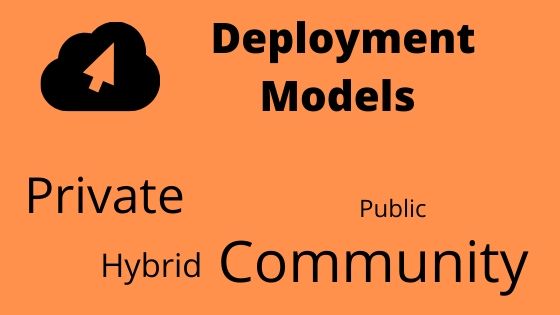
Cloud deployment models configure the cloud infrastructure depending on a few key components. There are four major deployment models for the cloud. They are:
- Public Cloud: It supports all kinds of users.
- Private Cloud: It supports a single organization
- Hybrid Cloud: It supports interconnected private networks.
- Community Cloud: It supports multiple organizations sharing one network.
46. Explain the different cloud service models.
There are three cloud service models available for the AWS platform and general cloud computing platforms as well. They are:
- SAAS: Software as a service is an application distribution model. The service providers host the application as a service, and the users can use the application in a complexity-free way.
- PAAS: Platform as a service is a total platform in the cloud where the developer can work and build applications such as AWS Elastic Beanstalk.
- IAAS: Infrastructure as a service provides virtual computing components and provides the total computing environment online. AWS platform is itself an example.
47. What is Amazon Lightsail?
Amazon Lightsail service helps to launch, organize, and manage the virtual private server. This service provides an environment, storage, secured networks, and static Ip as well. Amazon Lightsail is basically used by the developers as it can provide the total dev environment. You can use all the basic cloud resources and cloud applications as well.
48. Is there any way you could connect multiple connections to a virtual private network?
Yes, You have to make separate subnets in the VPC. Then you need to make a connection between the virtual private gateway and the customer gateway. You also need to check for the gateway security options and encryption methods.
49. What are RTO and RPO?
Every business model faces disasters, and they can happen at any time. There are solutions, and pre-defined RTO is the maximum length of time that you are willing to wait for a recovery.
RPO means the maximum amount of data you are willing to accept to lose in a disastrous situation.
50. What are load balancers?
Load balancers are responsible for the automatic, elastic load balancing when there is massive traffic incoming. Currently, three types of load balancers are available.
- Network Load Balancer
- Application Load Balancer
- Classic Load Balancer
with this, we are almost done with the Expert Level AWS Interview Questions And Answers.
Finally, Insight
Here ends our collection of AWS interview questions. We have tried to arrange the most common and frequently asked AWS interview questions. It is highly recommended not to fully depend on the questions answers; you also need to have proper preparation through practice. Hopefully, this collection of questions will help you to go through your next interview. If you think something is missing out, please let us know what possible AWS interview questions we may have missed. Also, share this article with your friends who are trying to face the interview.
